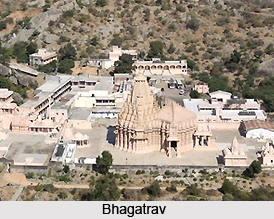 Bhagatrav, situated at Hansot taluka of Bharuch district in the southern part of Gujarat, is a minor archaeological site associated with Indus Valley Civilization. Excavations were carried out in this region by the Archaeological Survey of India under the guidance of Dr. S. R. Rao. The site is set close to the coastline of Arabian Sea, near the forest covered hills of Narmada and Tapti valleys and agate-bearing mines.
Bhagatrav, situated at Hansot taluka of Bharuch district in the southern part of Gujarat, is a minor archaeological site associated with Indus Valley Civilization. Excavations were carried out in this region by the Archaeological Survey of India under the guidance of Dr. S. R. Rao. The site is set close to the coastline of Arabian Sea, near the forest covered hills of Narmada and Tapti valleys and agate-bearing mines.
Bhagatrav is believed to have been a significant port in ancient times. A large part of the site is however washed out by floods from Kim River and backwaters from sea leaving behind only the peripheral areas for exploration. Bhagatrav is surrounded by water for eight months a year. Archaeological evidences have established the fact that the devastation of Harappan settlements at Bhagatrav occurred mainly due to flood. Bhagatrav has been accredited as one of the southernmost settlements of Harrapan culture having a distance of 1350 kilometres from Manda, which is the northernmost Harappan settlement identified in Jammu and Kashmir.
This article is a stub. You can enrich by adding more information to it. Send your Write Up to content@indianetzone.com



















